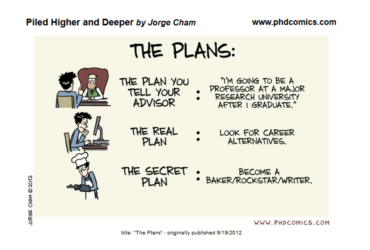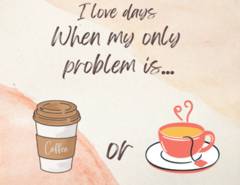BY: KENZI HANNUM
How many times have you looked at your friend’s dinner order at a restaurant and think to yourself, “That looks disgusting…” You might even start to scrunch your nose and grimace at the food without realizing what you are even doing. The reaction is automatic, and before you can collect yourself, your friend notices your disgust and calls you out for your poor manners. Now THEY are self-conscious about their food and their expectations are lowered after seeing your truly involuntary look of disapproval.
Has this ever happened to you? Or is it just me? Because this happens to me almost every time I eat dinner with my Ma (hi Mom!). I know she can’t help her looks of disgust most of the time, but no matter her intent it never fails to have an impact on my dining experience.
Now, we can’t completely discount all of our friends who you can count on for a good look of disgust when exposed to new foods. Evolutionarily speaking, these grimaces served a purpose for humans: to save us from foods that were unsafe, such as rancid meat. So, if a person thinks it looks disgusting, there might be a slight chance it is unfit for consumption and actually disgusting. However, as you probably realize, we no longer live in Paleolithic times, and now have very successful food safety protocols in place at food retailers. Now in modern times, this reason for being disgusted with a particular food is rarely justified. You might find this occurring when you go out to dinner with a friend who is a very picky eater, and you may be more adventurous with your food. Or for some people, this issue can even be a deal-breaker when it comes to dating. And, even if you know your dining companion may not want to try your “disgusting” food, if your dish ends up tasting fantastic, and you’re like me, you’ll make your dining partner try it anyway. However, odds are they’ll stand by their original belief of, “This is disgusting”, regardless of the reasoning you provide.
Why is that? Why is the emotion of disgust so influential and resistant to change? In that moment when the food was delivered, my mom essentially ate with her eyes. Her brain made the decision that the food was disgusting and unappealing. How does that happen when the meaning of “dis-gust” literally means bad taste? And she never even tasted the dish!
I hope this blog post will shed some light on disgust and food neophobia (fear of new foods), and discuss some of the influencing factors. I’d also like to discuss the new consumer trends that combat the traditional notion of avoiding “disgusting” items. We will conclude with some tips and tricks on how to better adapt to new and unknown foods, and flavors. If you yourself are a picky eater (or you know one) and are looking to broaden your food horizons, these tips could be for you.
Disgust and Food Neophobia—Contributing Factors
Paul Rozin, a psychology professor from University of Pennsylvania, has spent most of his career trying to better understand the emotion of disgust, because often times it is overlooked in scientific literature. He defines disgust as the “revulsion at the prospect of oral incorporation of offensive object.” (Paul Rozin & Fallon, 1987). In other words, just the mere thought of eating something that you find unappealing elicits a gag reaction, and therefore, your mind has rendered those objects inedible by your mental pre-conception of the object rather than the actual sensorial properties (Paul Rozin & Fallon, 1987).
But what causes an object to be rendered offensive psychologically? For some, it is simply the fact that it is unknown and unexpected. Humans love structure- we are naturally ingrained to desire a known outcome, have an understanding of what to expect. That is why many of the food preferences we have today are formed at a young age, tried and tested for years.
Food neophobia is the fear of novel, new foods. As a consumer of a new food, you no longer know what to expect out of the product, and if you grew up with very consistent meals and flavors, it makes it even harder to try something new. Many people struggle to try different ethnic foods because the flavors and spices used are unfamiliar—your brain doesn’t know if you like them or not, and thus is wary of what to expect.
Aside from unfamiliarity, texture has also been found to play a role in influencing disgust in a product (P. Rozin & Fallon, 1980). Many people are sensitive to different textures and the feeling they elicit physically. Often times the texture will remind them of something disgusting even though the flavors are completely different. If the texture of the food item resembles eating chalk, then by golly, your brain will start to believe you are eating chalk and elicit the disgust reaction because of the texture association you’re experiencing.
Are you ever disgusted by Velveeta Mac & Cheese? Odds are, probably not, unless you’re me. Back in the day when I was in elementary school, I got sick and ate some, and without going into too much detail, let’s just say the Velveeta did not stay in my stomach. To this day, the thought of eating Velveeta Mac & Cheese causes me to gag internally, even though I know objectively that many people love Velveeta Mac & Cheese. In this instance, nausea can occur even if the foods aren’t regarded as disgusting (Logue, Ophir, & Strauss, 1981; Pelchat & Rozin, 1982).

https://media1.tenor.com/images/944fe0dd8e011d08998a61caef06dce7/tenor.gif?itemid=6046675
Lastly, Rozin talks about the two laws of sympathetic magic in relation to the feeling of disgust: contagion and similarity (Paul Rozin, Millman, & Nemeroff, 1986). Contagion means that once a disgusting object is in contact with another object, it will always be in contact. Contagion may explain why many people don’t like their foods to touch, and if they do, they might start to lose their appetite (Paul Rozin, Fallon, & Augustoni-Ziskind, 1985). Similarity, on the other hand, is what typically occurs for my mother because she avidly believes that the image equals the product. Her visual assessment of a product is all she needs to make her conclusion regarding its taste. So, if similarity is truly at play with invoking disgust, how are there successful cafes that sell items that look like poop (see below)? If the image equals the product, wouldn’t consumers feel disgusted at the sight of “eating poop” and actively avoid it…?
Innovative consumer trends? Or is there a limit to challenging the status-quo?
You heard that right…there are actually cafes that sell poop-looking food items and are designed literally to look like a bathroom…

https://www.thetrentonline.com/wp-content/uploads/2014/04/Toilet-restaurant-The-Trent-3.jpg
https://www.thestar.com/content/dam/thestar/business/2016/12/15/now-open-poop-caf/srpoopcafe04jpg.jpg
The fact that I am talking about poop right now might make some of you very uncomfortable. In a recent interview about the science of disgust, Rozin stated, “Feces is the universal disgust, like the first disgust.” (link to article). So, going back to Rozin’s two laws of sympathetic magic-how can these cafes possibly be a hit?
I believe they draw customers in by challenging the status quo, embracing the seemingly impossible, and being just plain weird! Our culture fosters creativity and thinking outside of the box. With social media nowadays, ideas like poop cafes become viral and get people talking. People are now curious and want to try it for themselves! Next time you are in Thailand (link to website) or Toronto (link to website) you need to check these cafes out.

https://www.narcity.com/uploads/275287_468adff29032637b223d349bac0e30020bbab0d7.png
http://media.blogto.com/articles/53ec-2016107-pooop.jpg?cmd=resize_then_crop&quality=70&w=2048&height=1365
These cafes challenge the law of sympathetic magic when it comes to similarity by selling a product that has a visual image that elicits disgust. However, people will eat it—because at the end of the day who doesn’t love ice cream and chocolate, no matter the form it is in? But honestly, is there a limit to how far they can push the boundaries?
While these cafes succeed by playing on novelty and creativity, I think it will be a while before they become universally popular, simply because of the uphill battle in convincing someone a poop-themed dish is not disgusting. A few years ago, the “Magic Restroom Café” tried to make a name for itself in Los Angeles, only to end up closing its doors after 8 months (link to article). This brings me to my next point: how can we change the culture and rewrite what things elicit disgust? Is there a way to overcome the mentality that poop is disgusting? That the visual appearance of a food merits disgust?
Ways to potentially lower the feeling of disgust and try new foods!
So now that we know about some of the reasons we find certain food “disgusting” over others, is there a way to combat this? Is there a need to combat it? As stated before, from an evolutionary perspective disgust is a protective measure, similar to the evolutionary protection afforded by the taste of bitterness. Our bodies are programmed to be wary of unknown foods in order to prevent disease and sickness. How many of you like moldy cheese? If you aren’t a fan, it is probably because you find mold disgusting, right? Isn’t mold bad and a sign of spoilage? How can this be good for me? The mere fact that it has “mold” causes you to put up your defenses.
One example of overcoming the feeling of disgust in my own life dealt with sushi. How can eating raw, uncooked fish be safe to eat? Every time I was around sushi, I would feel disgusted and lose my appetite. I would be dumbfounded that someone not only would eat it, but crave it. However, knowing a lot of what drives our hedonic liking of food is mental and psychological, along with a little peer pressure from my friends, I decided to try sushi. To be honest, the first time I tried it, I did not like it—it confirmed my original expectation of, “sushi is disgusting.” Over the next few years, I eventually found myself in situations where I tried it again because the foodie in me felt like I was missing out. Slowly that aura of disgust started to fade away, and the true flavors and textures of sushi came alive. And believe it or not, now my body craves sushi, which I never thought would happen.

https://s.yimg.com/ny/api/res/1.2/5oJlTHTeP4kNHW31aIiEog–/YXBwaWQ9aGlnaGxhbmRlcjtzbT0xO3c9ODAw/http://38.media.tumblr.com/43757e43843d0ef3677cecf60673cb81
But how did it happen? I was convinced sushi was disgusting but now it is something I seek out. In a weird way, it follows the saying of practice makes perfect. Repeated exposure is a way to potentially reduce your feeling of disgust towards certain foods (Paul Rozin & Fallon, 1987). Since a lot of disgust is driven by your perceived expectation, you can retrain your brain to become familiar with the unknown flavors, and start to mold a new expectation. But it won’t happen overnight.
Another method, though strongly unadvised, is to deprive yourself. Next time your friends want sushi for dinner, you might want to skip out on your afternoon snack so your stomach is grumbling, because then your body is looking for nutrients and energy. Your needs are different, which will influence your expectations of whatever food you are about to consume. A recent study confirmed that in times of deprivation disgust is lowered when presented with images of un-palatable looking dishes that bear resemblance to excrements and vomit (Hoefling et al., 2009). You can see an extreme case of this in action when you’re watching a zombie apocalypse movie and understand why the characters tend to eat whatever they get their hands on…whatever.
Conclusion
In conclusion, feelings of disgust for a food is mainly generated by your perception of an object and it is something I believe people have control over. However, it is important to remember that feeling disgust is a defense mechanism and doesn’t always need to be combated. There are items that you should not consumer; for example, poop. But what if this poop is now made of ice cream and chocolate? I mean, it won’t kill you (: And honestly, you simply just might not like a food item and that is okay! After reading this piece, maybe you’ll give ‘disgusting’ foods a few tries before you put it on your black list forever.

http://s2.quickmeme.com/img/30/300b057a3757cc2c70ff7400d107ad763c25e5bf58c86fc9c1aacb8135ff82b7.jpg
References
Hoefling, A., Likowski, K. U., Deutsch, R., Häfner, M., Seibt, B., Mühlberger, A., … Strack, F. (2009). When hunger finds no fault with moldy corn: food deprivation reduces food-related disgust. Emotion (Washington, D.C.), 9(1), 50–58. https://doi.org/10.1037/a0014449
Logue, A. W., Ophir, I., & Strauss, K. E. (1981). The acquisition of taste aversions in humans. Behaviour Research and Therapy, 19(4), 319–333. https://doi.org/10.1016/0005-7967(81)90053-X
Pelchat, M. L., & Rozin, P. (1982). The special role of nausea in the acquisition of food dislikes by humans. Appetite, 3(4), 341–351. https://doi.org/10.1016/S0195-6663(82)80052-4
Rozin, P., & Fallon, A. (1980). The psychological categorization of foods and non-foods: A preliminary taxonomy of food rejections. Appetite, 1(3), 193–201. https://doi.org/10.1016/S0195-6663(80)80027-4
Rozin, P., Fallon, A., & Augustoni-Ziskind, M. (1985). The child’s conception of food: The development of contamination sensitivity to “disgusting” substances. Developmental Psychology, 21(6), 1075–1079. https://doi.org/10.1037/0012-1649.21.6.1075
Rozin, P., & Fallon, A. E. (1987). A perspective on disgust. Psychological Review, 94(1), 23–41. https://doi.org/10.1037/0033-295X.94.1.23
Rozin, P., Millman, L., & Nemeroff, C. (1986). Operation of the laws of sympathetic magic in disgust and other domains. Journal of Personality and Social Psychology, 50(4), 703–712. https://doi.org/10.1037/0022-3514.50.4.703






Leave a Reply